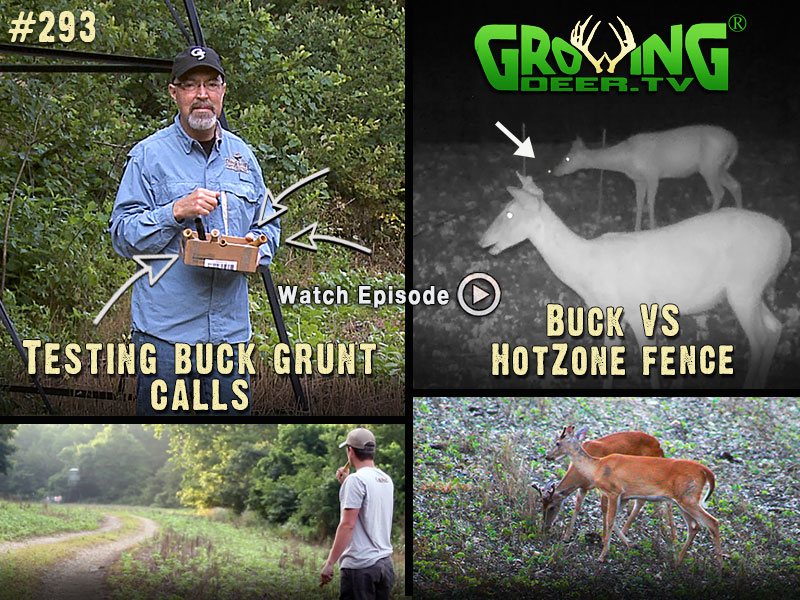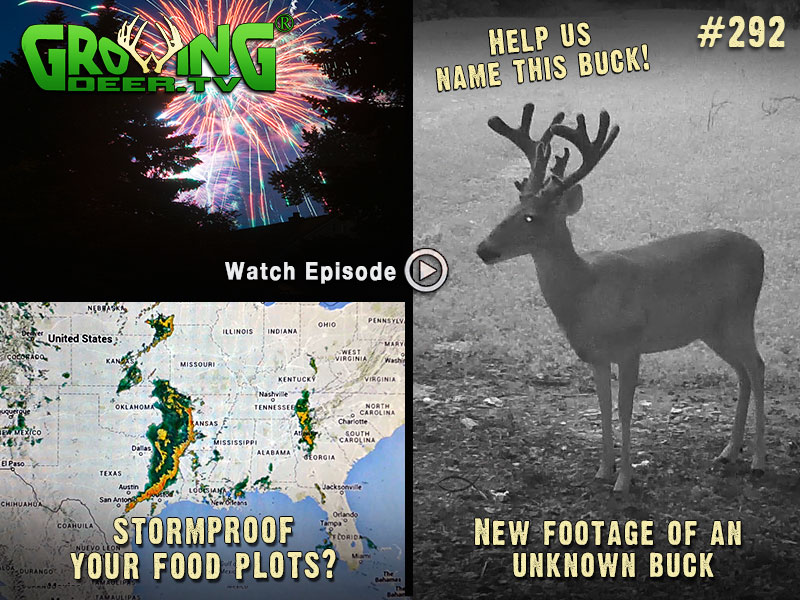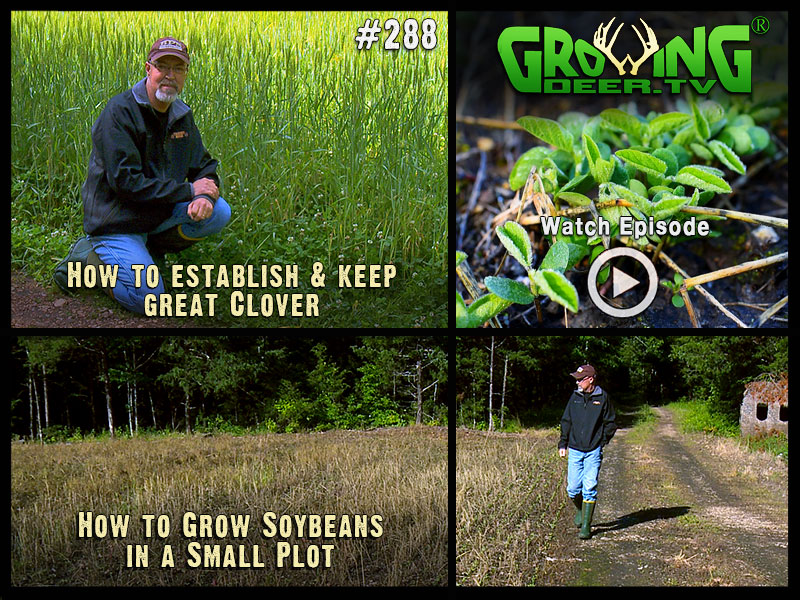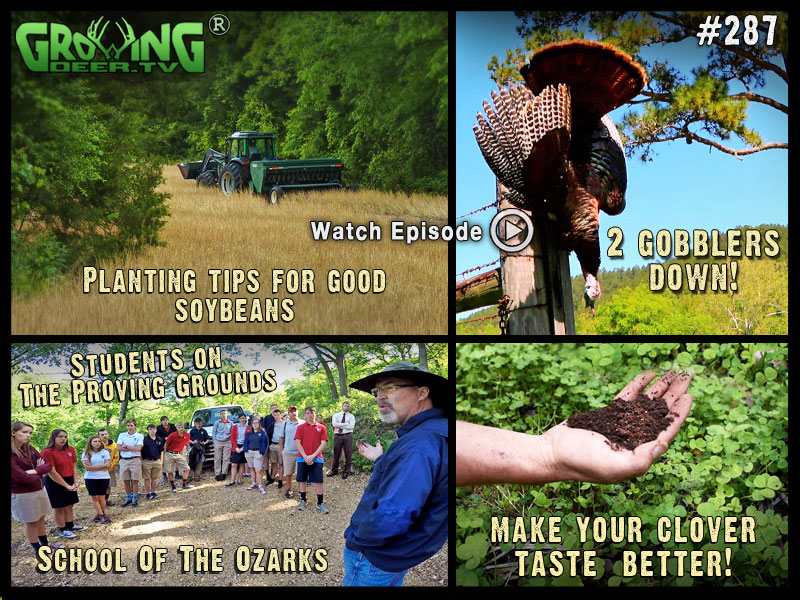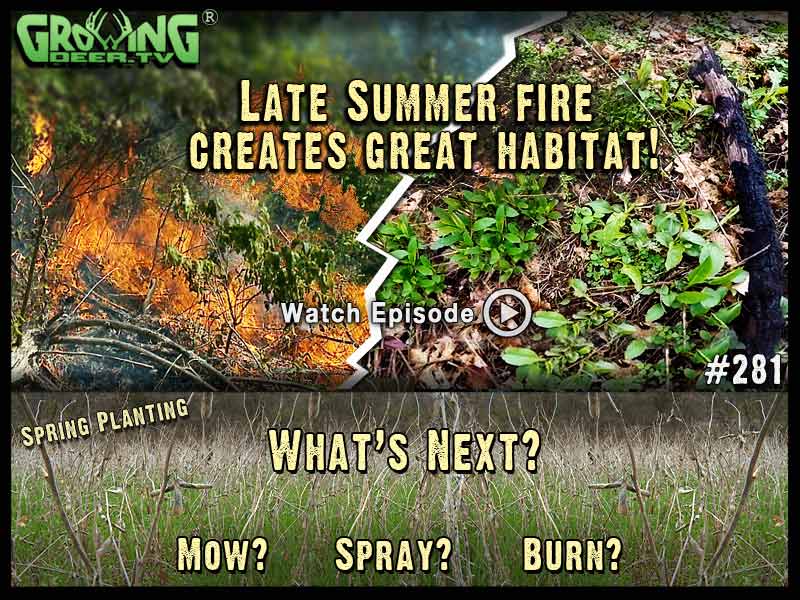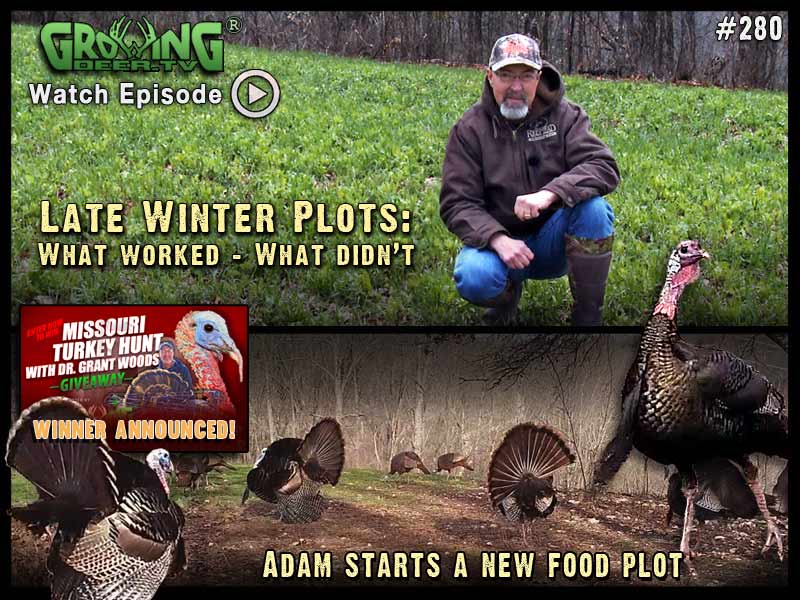Category: Food Plots
Food Plot Reminders: From Plants To Pocket Knives
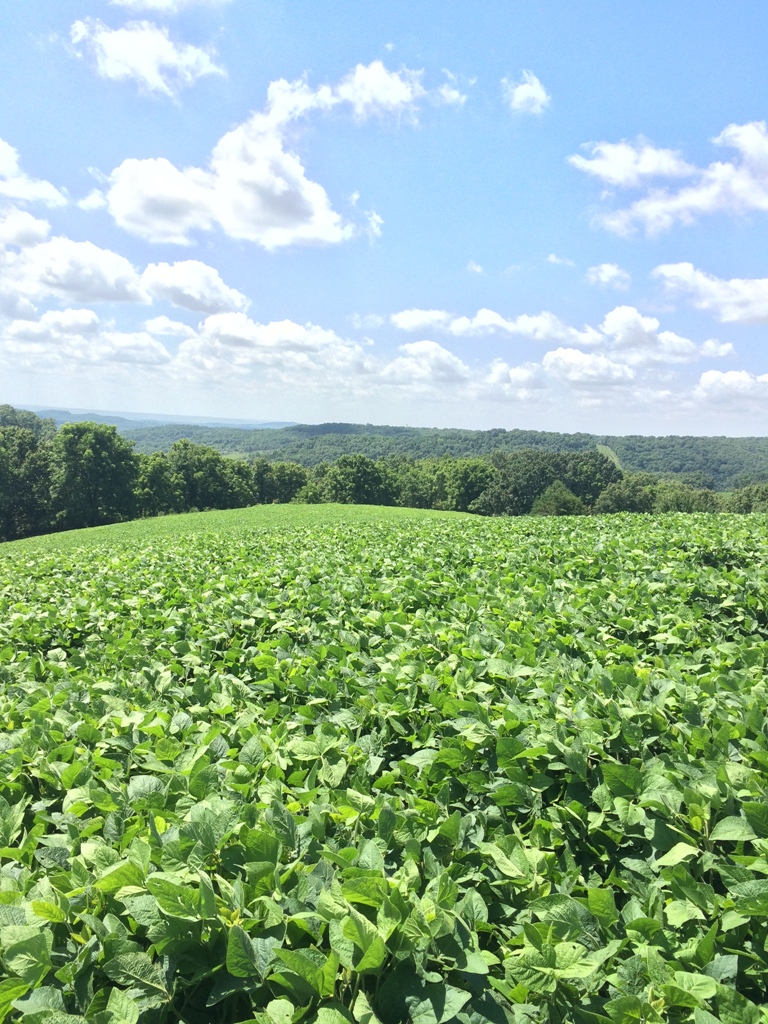
A good food plot program will match the crops you plant to your food plots.
Regardless of whether you already have a food plot program or are just getting started, there are several things to keep in mind.
First and foremost, is to match the crops you plant to your food plots. Different plants require different nutrients, moisture, and amounts of sunlight. Plots that run east-west receive more sunlight than those that run north-south. Additionally, northern slopes retain more moisture than southern ones. Knowing the soil and terrain can make the difference between a great food plot and a poor food plot.
Getting a soil test done and prepping the seedbed before planting allows a better understanding of what you need (if anything) to add to the soil and better guarantees the survival of the plot. However, maintaining food plots is just as important as planting them. Spraying herbicide to reduce competition from weeds and controlling pests will maximize the plants’ growth.
Last but not least, is to routinely service your equipment. It doesn’t matter if it is a pocket knife or a large tractor, maintaining equipment will help make them work more efficiently. Properly maintained equipment is also safer to use.
While planning next year’s food plots use these ideas to not only improve the wildlife’s health but also increase your chance of harvesting a mature buck next fall!
Sowing seeds for the future,
Kevin Shettle
Grunt Calls & Food Plots – Episode #293
We’ve got footage that shows our Hot Zone fence in action. The fence is only 2 feet high yet it keeps the deer from hammering important portions of food plots when the beans are young! We have the Reconyx footage that shows how. Watch it here!
Ever test buck grunt calls? We grabbed a boxful of old and experimental calls and took them to the field. It’s all about getting your tools ready for the approaching deer season.
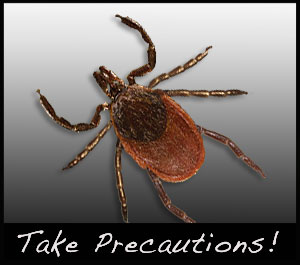 Tip of the Week:
Tip of the Week:
Reduce tick bites: Permethrin, applied appropriately to clothing, does a great job of keeping ticks off.
Protect Your Food Plots – Episode #292
It’s been raining at The Proving Grounds. Throughout the US heavy rains have washed-out roads and bridges causing very serious damage. These rains have also damaged much of the agricultural landscape. Do you want to protect the hard work and money in your food plots? Watch now to learn how you can stormproof your food plots!
It’s always exciting to see a new buck in the food plots. Now we need your help to name this buck!
INDEPENDENCE DAY
July 4th, 1776 is the birth of our American independence. Our freedoms come from God. May God bless everyone who defends those freedoms.
Small Food Plots For Big Results
Young soybeans are one of the most attractive plants to deer. In areas with a high deer population or in small food plots it can be difficult to maintain a healthy stand of soybeans due to heavy browse pressure. This problem can be solved with trigger finger management (shooting more deer) or using a small electric fence and protecting your soybeans.
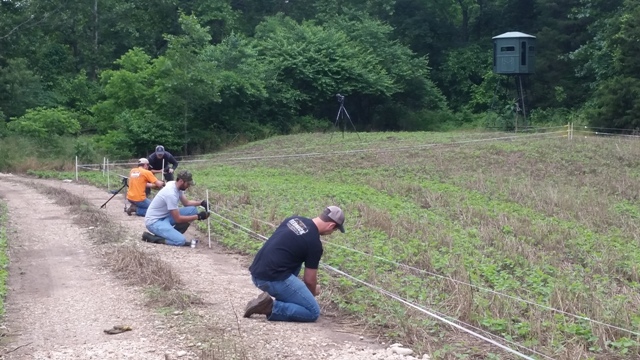
Assembling the Hot Zone fence within bow range of the Redneck Blind will create a great late season hunting spot!
Recently we assembled a Non Typical Hot Zone electric fence around one of our food plots to help protect a section of our soybeans, while also ensuring a late season hunting hot spot! Our plan is to feed the deer all summer with the soybeans outside of the fence and then drill Eagle Seed Broadside through the browsed beans in August. This will provide green forage for deer through the fall and winter. During the colder months of deer season when the deer are in search of a high energy food source we’ll open up the fence. With this process we’ll be feeding the deer year around with a very high quality food source .
Using a small electric fence like the Non Typical Hot Zone fence gives hunters the ability to protect soybeans until they’ve matured and produced pods. During the late winter there aren’t many food sources more attractive the standing soybeans!
Daydreaming of whitetails,
Adam
Bean Plot Damage
From spring until early summer, many hunters and farmers are hard at work planting food plots and agricultural fields either to hunt over or to harvest for income.
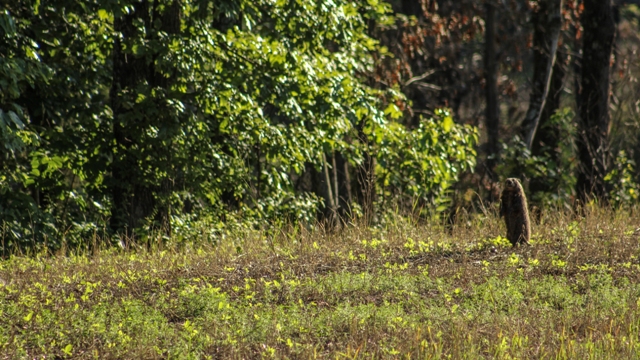
Groundhogs can damage food plot crops quickly, depriving deer and turkey access to quality forage.
Most hunters and farmers focus on the needs of the plants, such as fertilizer, ample rainfall, and lack of competing vegetation, but they fail to identify one major threat to young crop fields. Consumption of young plants by pest animals such as groundhogs can wipe out large sections of a field to the point that they may need to be re-planted.
This can be costly to the landowner as well as reduce the amount of quality forage available to the desired game animals. If no action is taken, groundhogs can remove the forage from several acres rapidly! This can be devastating to deer and turkeys that depend on that food source during the growing and late season!
Where legal, trapping and shooting of groundhogs soon after the seeds germinate might be what’s needed to allow the crops to be productive.
Nicolas Halchin
Clover Management – Episode #288
Clover is a great addition to your food plots. It grows early and handles heavy browse pressure. In this episode, Grant shares a great technique to establish and keep a great stand of clover. Plus, forage soybeans are so loved by deer that their growth can be limited in small plots. Watch this GrowingDeer.tv episode as Grant explains an exciting technique to improve soybean production in small plots!
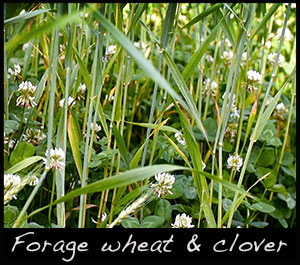
Tip of the Week:
Start your stand of clover with forage wheat. Yep, planting wheat, at the same time as clover will protect young clover from browse and harsh weather. Watch this episode to learn more.
Soybeans In Small Plots
Deer love soybeans! They are attracted to them from when they come out of the ground to the last pods available during late winter! Unfortunately, deer can damage and even kill soybeans if they browse them too much when they first start to grow.
Knowing this I often plant soybeans at twice the normal rate in small plots. This allows deer to feed but there are simply too many young soybean plants for all of them to be damaged.
Planting at a higher density doesn’t hurt the beans as the young plants are not competing for water and nutrients like more mature plants. By the time the soybeans mature deer have usually thinned the plant population enough that the remaining stems can mature without too much competition.
If you are planting small plots with soybeans, trying increasing the planting rate if deer are wiping out the crop before hunting season.
Growing Deer together,
Grant
Spring Food Plots – Episode #287
It’s growing season at The Proving Grounds! We’ve got tips to make your small clover plot a killer spot. Next, we have ideas for getting the most out of your soybean plots.
Want some hunting action? Heath and Lindsey share 2 gobbler kills in 2 states. Look out! School of the Ozarks students have descended on The Proving Grounds. Watch Grant as he challenges these freshman to think!
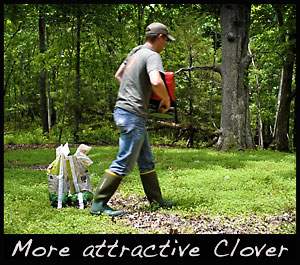 Tip of the Week:
Tip of the Week:
Clover is great for very small plots.
Fertilize to make it last and taste better.
We add Antler Dirt to feed our clover and make it a place deer want to be!
Preparing Spring Food Plots – Episode #281
We spent a lot of time preparing for and using prescribed fire. Is prescribed fire worth the effort? Watch this episode as we checkout areas we burned late last summer. Plus, the soil will soon be warm enough for planting. How do you prepare your fall/winter plot for spring planting? We’ll explain what we do!
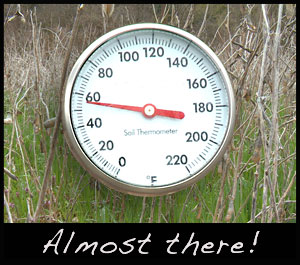 Tip of the Week:
Tip of the Week:
Is it warm enough?
Using glyphosate on old plots: Air temp 60°
Planting seeds like soybean: Soil temp 60°
Food Plots: What Worked And What Didn’t – Episode #280
The winner is announced for an all expenses paid turkey hunt to the famous Redneck Blinds Farm! Plus, Grant explores a couple of Proving Grounds food plots where some of his techniques worked and some did not! Watch this episode as he shares the good and bad.
Where’s Adam? He and the crew are starting a new food plot based on last season’s deer encounters. Adam thinks he can pull the deer in closer to the tree stands.
Tip of the Week:
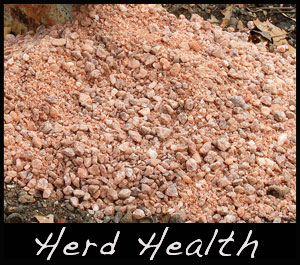 Law of The Minimum:
Law of The Minimum:
The ability for any critter to express their maximum genetic potential is controlled not by the total amount of resources available, but by the scarcest resource. Do what we do and ensure deer at your Proving Grounds have all the minerals they need by using all natural Trophy Rock which includes more than minerals. It’s a year round supplement, but we especially want to make sure Trophy Rock is available now when antlers and fawns are developing!



